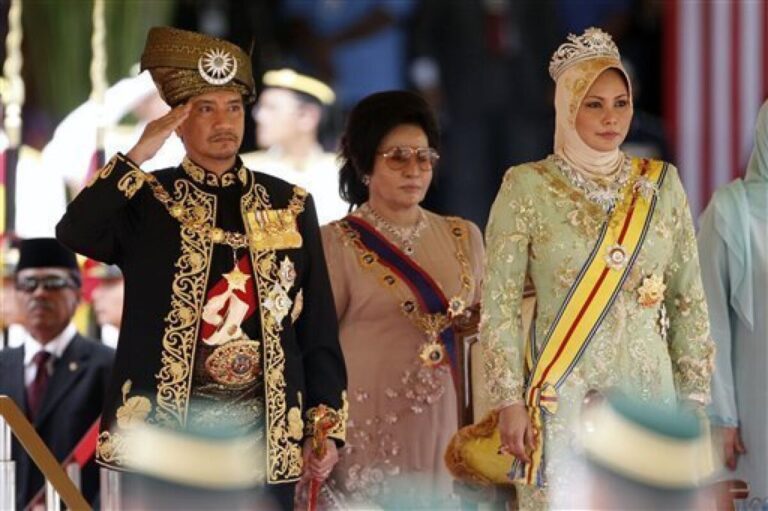Ruponti’S Lathi Khela Torch: A Symbol of Strength
Ruponti’S Lathi Khela Torch is a symbol of strength, representing the ancient martial art of Lathi Khela. This traditional form of combat utilizes a stick as the fundamental weapon, predating the use of swords and spears in warfare.
Originating in Bengal, Lathi Khela is an integral part of the region’s cultural heritage and has gained popularity as a symbol of power and protection. Ruponti carries the torch of this martial art, showcasing its significance and embodying the strength it symbolizes.
As a woman excelling in this predominantly male-dominated practice, Ruponti’s commitment to Lathi Khela is a testament to the enduring influence and relevance of this martial art in contemporary times.
The History Of Lathi Khela
Ruponti’s Lathi Khela Torch is a symbol of strength in the history of Lathi Khela. This ancient martial art form utilizes a stick as its primary weapon, providing a foundation for all other techniques and training warriors in the pre-gun era.
Origins Of Lathi Khela
The ancient martial art form of Lathi Khela traces its roots back to a time when swords and spears were the dominant weapons of battle. It was during this era that the art of stick fighting, using a long bamboo weapon known as the Lathi, emerged as a universal practice for training warriors. Dating back centuries, Lathi Khela served as the foundation for all weaponry techniques and played a significant role in shaping the martial arts landscape.
Evolution Of Lathi Khela
Over time, Lathi Khela evolved from being simply a training method to becoming a form of self-defense and an essential part of different cultures. In ancient times, skilled Lathi practitioners were hired by rich farmers and influential individuals as a means to ensure their security and showcase their power. The art form continued to evolve, gaining popularity and recognition among various communities.
As time went on, the practice of Lathi Khela grew beyond the realms of self-defense. It became an art form that was performed during festivals, cultural events, and even as a form of entertainment. Skilled lathiyals, or stick players, like Ruponti Chowdhury, have taken the art to new heights by incorporating awe-inspiring techniques and captivating performances that leave the audience spellbound.
Lathi Khela In Different Cultures
Lathi Khela transcends geographical boundaries and is widely practiced in different cultures. In Maharashtra, India, it is known as “Lathi Kathi” and was primarily developed as an act of self-defense during the times of Chatrapati Shivaji Maharaj. The form involves using a wooden or metal pole, similar to a sword, and continues to be passed down through generations.
Similarly, in Bengal, Lathi Khela has a rich cultural significance and is deeply ingrained in the region’s heritage. It is not only considered a martial art but also a symbol of strength and resilience. Performances like Ruponti’s Lathi Khela Torch carry the legacy forward, showcasing the art form to a wider audience.
Throughout history, Lathi Khela has played a vital role in shaping the martial arts landscape, preserving cultural traditions, and showcasing the strength and skill of its practitioners. Its evolution, from a training method to an art form celebrated across different cultures, signifies the enduring power and relevance of Lathi Khela. The torch of this ancient martial art continues to be carried by individuals like Ruponti, who epitomize the essence of strength, perseverance, and dedication.
The Technique Of Lathi Khela
Ruponti’s Lathi Khela torch is a powerful symbol of strength in the ancient martial art of Lathi Khela. With its origins in stick weaponry, this technique was widely practiced to train warriors before the arrival of modern weapons. Ruponti, a talented ‘lathiyal’ or stick player, has earned a reputation for her skill and performances.
Basic Movements
Lathi Khela, also known as the stick fighting art, is characterized by an array of basic movements that form the foundation of this ancient martial art. These movements focus on utilizing the stick as both an offensive and defensive weapon.- Thrust: The basic thrust movement involves using the stick to poke or jab the opponent. It is a quick and precise move that aims to create an opening for further attacks.
- Swing: The swing movement involves using the stick in a sweeping motion to strike the opponent from different angles. It can be performed horizontally or vertically, depending on the desired target and the situation.
- Block: The block movement is crucial in Lathi Khela as it helps to parry or deflect incoming attacks. It requires quick reflexes and precise movements to effectively defend against strikes.
- Feint: The feint movement is a deceptive technique that aims to mislead the opponent by faking an attack. It is used to create openings and catch the opponent off guard.
Training And Conditioning
To become proficient in Lathi Khela, rigorous training and conditioning are essential. The training regimen focuses on developing both physical strength and mental agility.- Physical Conditioning: Training sessions involve various exercises to enhance strength, flexibility, and endurance. These may include running, bodyweight exercises, and stick-specific drills to improve grip strength and dexterity.
- Technique Training: The practitioners undergo rigorous training to perfect the basic movements of Lathi Khela. This involves repetitive drills to develop muscle memory and ensure precision in executing techniques.
- Sparring: Regular sparring sessions are held to apply the learned techniques in realistic combat scenarios. This helps practitioners develop timing, reflexes, and adaptability.
- Physical Fitness: Lathi Khela places a strong emphasis on overall fitness. Apart from specific training, practitioners engage in cardiovascular exercises and strength training to enhance their physical capabilities.
Combination Techniques
In Lathi Khela, combination techniques are an integral part of advanced training. These techniques involve linking various basic movements together to create fluid and seamless attacks or defenses. Some common combination techniques include:| Combination Technique | Description |
|---|---|
| Thrust-Swing | This combination involves initiating an attack with a quick thrust and following up with a powerful swing to disarm or incapacitate the opponent. |
| Block-Counter | By blocking an incoming attack and immediately countering with a strike, this combination technique aims to counteract the opponent’s offensive moves effectively. |
| Feint-Swing | Using deception and misdirection, this combination technique tricks the opponent into defending against a non-existent attack while delivering a swift swing to their vulnerable areas. |
Symbolism Of Ruponti’s Lathi Khela Torch
Symbolism of Ruponti’s Lathi Khela Torch: Ruponti’s Lathi Khela Torch is a powerful symbol deeply rooted in traditional Bengali culture, representing strength, empowerment, and the age-old martial art form of Lathi Khela. The torch holds significant meaning, depicting the endurance and resilience of the community it represents. Let’s delve into the symbolism of Ruponti’s Lathi Khela Torch through its various dimensions.
Strength And Power
The Lathi Khela Torch serves as a beacon of strength and power within the Bengali community. It embodies the unwavering determination and resilience of the people, showcasing their ability to overcome challenges and adversities.
Representation Of Tradition
As a symbol deeply rooted in tradition, Ruponti’s Lathi Khela Torch represents the rich cultural heritage of Bengal. It honors the legacy of the ancient martial art form, preserving the customs and practices of generations past, and reflecting the enduring spirit of the Bengali people.
Empowerment Of Women
The torch also empowers women as it symbolizes their strength and resilience in a historically male-dominated society. Ruponti’s Lathi Khela Torch represents the empowerment of women, breaking societal barriers and fostering a sense of equality and pride within the community.
Celebrating The Legacy Of Ruponti
Ruponti, fondly known as the torchbearer of Lathi Khela, has left an indelible mark on this ancient martial art. Her unwavering dedication and exceptional proficiency in wielding the lathi have solidified her status as a true icon, exemplifying strength, resilience, and honor. Let’s delve into her remarkable journey and celebrate the enduring legacy she has bestowed upon the world of Lathi Khela.
Ruponti’s Contribution To Lathi Khela
Ruponti’s mastery of Lathi Khela has not only elevated the art form but has also inspired countless individuals to embrace its rich heritage. She has tirelessly imparted her knowledge and expertise, nurturing a new generation of lathi warriors and ensuring the preservation of this esteemed tradition.
Legacy Of Ruponti
The legacy of Ruponti transcends beyond her unparalleled skill in Lathi Khela. She has become a symbol of empowerment for women, breaking barriers and redefining the role of females in the realm of martial arts. Ruponti’s legacy serves as a testament to the enduring spirit and tenacity of those who dare to pursue their passions relentlessly.
Recognitions And Achievements
Ruponti’s remarkable contributions to Lathi Khela have garnered widespread acclaim and recognition. Her exceptional performances and dedication have earned her prestigious accolades, solidifying her position as an esteemed figure in the martial arts community. Ruponti’s achievements stand as a symbol of her unwavering commitment and unparalleled skill in the art of Lathi Khela.
Conclusion
The Ruponti’s Lathi Khela Torch is not just a mere symbol, but a powerful representation of strength and determination. This ancient martial art form, with its roots deeply embedded in history, showcases the proficiency and skill of Lathi Khela practitioners.
The torch carried by Ruponti symbolizes the resilience and courage of women who have excelled in this traditionally male-dominated art. Through her performances, Ruponti has shattered stereotypes and proven that gender is never a barrier when it comes to showcasing true strength.
The Lathi Khela Torch serves as an inspiration for all, reminding us of the unlimited potential and power we possess within ourselves.





